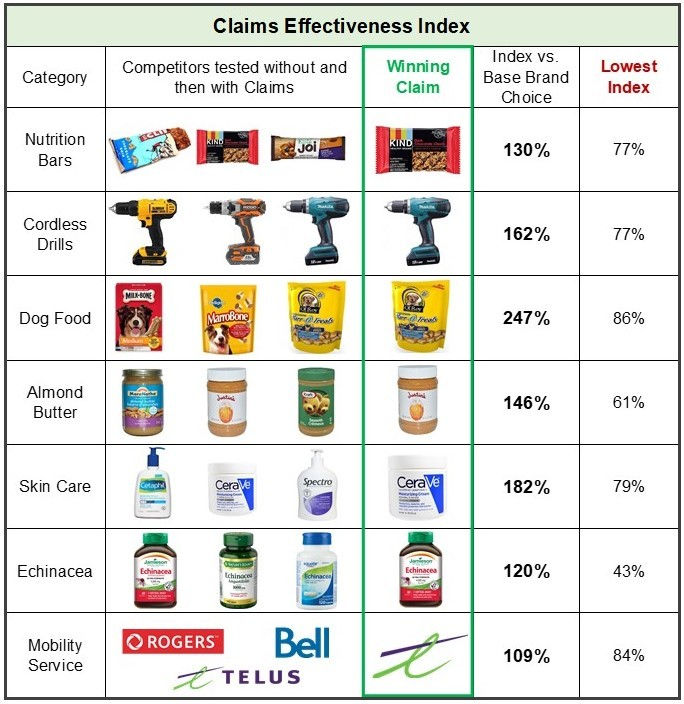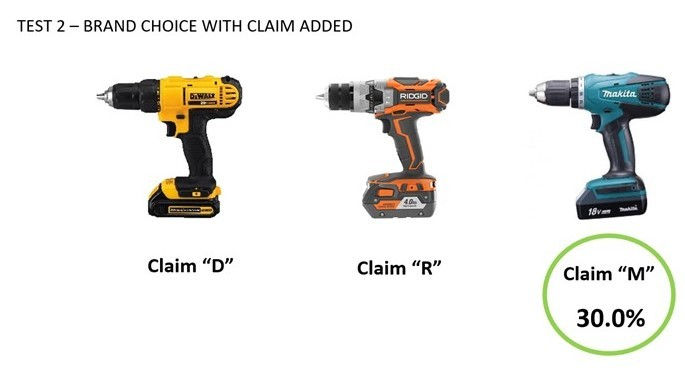Study: Winning Claims increase Brand Choice +32%
- gwight7
- Feb 8, 2021
- 4 min read
Updated: Aug 22
This year, consider repurposing the time you spend analyzing super bowl ads
If you are a Marketer, chances are that this week you will spend some time analyzing Super Bowl ads. Which Brand won the Super Bowl, best insight, best production value, which Brands got the tone right and which Brands missed the mark.
It makes sense, the Super Bowl is a unique opportunity to reach a huge audience. But what if I told you there is a much more cost-effective way to influence how your target views your Brand? Claims are a powerful, often overlooked lever. The results below show the impact of Claims across a broad range of Categories, including Consumables, Durables, and Services. Claims work effectively in Bricks & Mortar and E-Comm businesses, as well as in content and with Influencers.

These insights are based on an annual Claims Research Study commissioned by Levelfour Inc. which measures the impact Claims have on Brand Choice. Twenty-two Categories were included in the most recent study.
Where to start:
1) Understand Your Current Performance - Are your Brand’s Claims winning or losing vs. competition today? An example of how to calculate your Claims Effectiveness Index is explained in the case study below featuring the Cordless Drill Category and Makita.
2) How do you develop the best possible Claim? A general rule of thumb is do not use Tag Lines or Product Features to convince the shopper to buy your product. Both been proven to reduce Brand Choice. Claims "Must Do's" are outlined after the Cordless Drill Case Study.
Example - What is a CLAIMS EFFECTIVENESS INDEX?
Three cordless drill Brands were shown to research respondents. They were asked which Brand they would buy and, without any other information other than the product visual, 18.6% of respondents chose Makita. This metric is the “Base Brand Choice” and is the product of attributes ranging from Brand Awareness, Media levels, Value Perception and user experience.

We showed identical visuals to a different group of research respondents with one change. We added each Brand’s in-market Product Claim. With this one variable being added, Makita’s Brand Choice went from a base of 18.6% to 30%, a +62% increase.

The change from Base Brand Choice (Makita 18.6%) to the Brand Choice with a Claim (Makita 30%) is a Brand’s Claim Effectiveness Index (30.0/18.6 = 162% Index) which measures how much impact a Claim has on a Brand’s rate of purchase. This is an important metric to track on your business.
At a minimum, a Brand’s Claims Effectiveness Index should be 100%. If your Brand has a score higher than 100%, it means you are likely converting shoppers at point of purchase to your Brand from a competitor. If your Brand’s score is lower than 100%, then the opposite is happening – your Brand is most likely in the consideration set when the shopper begins to shop, but it is losing disproportionate purchases due to the competitor’s Claim being more convincing than your Brand’s Claim.
So, now you have this metric – the Claims Effectiveness Index - to think about. Is it worth focusing limited resources on this?
Here are three reasons why it should help your business:
1) Communicating a winning Claim is almost FREE. Identifying the absolute best Claim for your business has very high ROI. When you develop the best possible Claim, you do not have to buy incremental media or retail space for your Claim. It can be communicated on existing Brand assets such as packaging, E-Comm, Website, with Influencers and Social channels.
2) Successful Brands understand that Brand Equity is critical, yet many of these same Brands use Claims on-pack that REDUCE its own Brand Choice (see table above) – WHY IS THIS?
First, Claims Effectiveness may not be measured at some of these organizations and instead left to internal debate on what should be communicated. The other reason is that developing a winning Claim is more complex that it looks.
Here are five considerations to develop a Claim that will outperform competition: i) truly understanding the shopper barrier to purchase, ii) communication & package design must be absorbed by the shopper, iii) the structure of language in the Claim, iv) understanding how your core target responds to the Claim, and v) consistency & integration across the Brand's communication ecosystem.
3) You get what you measure. Most organizations do not measure Claims effectiveness vs. competition so they do not know if they are winning or losing. Based on the impact on Brand Choice and the ROI benefit mentioned above, the Claims Effectiveness Index should be a core Brand Health metric.
If you would like online training on how to develop Claims, help on testing Claims effectiveness or help deciding which media vehicles should be used to deliver Claims, you can use this link to get in touch:
Levelfour has proven results with major global clients that can be replicated for businesses of all sizes.
*Note – Categories tested in the latest study include: Almond Butter, Almond Milk, Auto Dish, Bath Tissue, Cereal, Coffee Makers, Dentures, Dish Liquid, Garbage Bags, Hard Surface Cleaners, Health Bars, Internet, Lawn Fertilizer, Pet Food, Petroleum Jelly, Pressure Washers, Protein Bars, Skin Care and Vitamins.




Comments